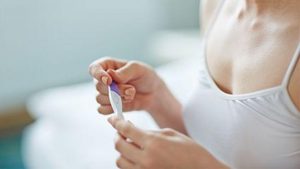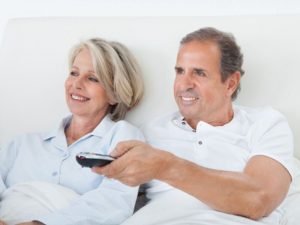REMEMBER that part in the movie Minority Report when Tom Cruise walks through a sea of personalized billboards that recognize him as he goes past, calling out to him by name to remember the things he needs and wants, and the things he’s bought before? What if those adverts featured images of him reflected back to show exactly what he would look like if he were to purchase the product?
If we look at our current selfie obsession and our desire to see “real” women in advertising and magazines, people that look more like us wearing and using the things we’re expected to buy, and then consider fashion bloggers and social media sharing of recent purchases, it does seems as though advertising that reflects our own image back at us might be the logical way forward for future marketing.
Instead of seeing a model wearing the latest clothes and make-up, we would see ourselves and how we would look in those jeans or with that eye shadow. Because in the end, advertising and women’s magazines are really all about making sure we buy the stuff that they’re selling, and that means we have to be able to visualize ourselves with that stuff.
This, however, would give us the reality and not the fantasy — the one that pretends like we could be one of those women or men beaming down on us from on high billboards. And it is, no question, a surreality that requires pre-production, post-production, editing, retouching, makeup, and lighting. How often do we order something online only to find out, in the light of our bathroom mirror, that we look nothing like our imagination and the advertisement led us to believe we would.
But we’ve known this for some time, and most of us have arrived at a point where we know and understand that retouching happens, and that the photos we see in ads and magazines are a complete fantasy. We’ve accepted that what is being presented to us is not an attainable level of beauty — the proportions of limbs to torso to breasts to waist and so on would not be something any woman could achieve physically, even with copious amounts of plastic surgery.
But it seemed to be right about then, just when we had grasped this concept, that things switched and the conversation changed. As retouching reached ridiculous levels of manipulation, we got very concerned about over-use of Photoshop. Soon images of “real” women untouched by the airbrush tool were everywhere, with their slightly larger thighs, tan lines, freckles, possibly a small roll of flesh here or there. And because we’d asked for it, we were expected to be grateful.
For instance, if you take a look at the Aerie Real website — that’s the underwear line from American Eagle that purports to only use “real” and not retouched images in their advertisements — you’ll see the brand showing off a stream of Instagram photos from customers wearing their recent purchases.
But I’m not sure those images of “real” women are going to make us feel good. What do I think when I see a Photoshopped image of a celebrity? I think: That image is clearly Photoshopped, oh well, what shall I have for dinner?
What do I think when I see an image of a “real” woman, who is not retouched, wearing Aerie lingerie? I think: That woman has not been retouched, which means her beauty (her skin, her body, her hair) is entirely attainable and possible, if only I were to be better. I must work out more, eat less, buy more hair conditioner, get a new face cleanser, whiten my teeth, exfoliate and moisturize my entire body daily, get my hair professionally dyed, learn how to apply make-up, wear more make-up… and so on. Basically, the un-Photoshopped image personally causes me more anxiety and provokes more self-loathing than the Photoshopped one, which I can see and accept as a representation of an entirely impossible level of beauty that no number of gym trips or new mascaras are going to help me reach.
I know that the celebrity and the model still had their hair and make up fixed and a lighting expert and they only chose the best images from a whole day of shooting, but still — this is “natural” beauty, this is real, and possible.
And isn’t that convenient for the people who need to sell the things that we need to look that “naturally” beautiful? If the images are of women just like us — only slimmer and prettier and more, you know, model-like or actress-like — then it renews and revives the potential of their products. The attainable and “natural” beauty of the un-Photoshopped women causes more brow-beating than any number of crazy-looking edits that leave a woman without her right arm or the majority of her ribs.
How do the models and actresses feel about not getting Photoshopped? Doesn’t it mean more pressure for them to look “naturally” amazing? Recently, when model Robyn Lawley posted a plain photo of herself on Instagram wearing a bikini, this was seen as courageous and feminist and inspiring. Of course, she looked just great. But the media neglected to mention that she’s selling her own line of bikinis. What better way to convince women they too would look great in her bikinis if not with an un-Photoshopped picture? Because if it was Photoshopped, we might think it unlikely that it would fit and look good on our “real” and “natural” bodies.
Of course, we don’t all look like, or even almost-look like, Robyn Lawley and that’s okay because we’re the majority and they need to sell bikinis to the majority. But magazines and advertising work by making us want to aspire to be the person we see. It demands fantasy. If it was actually just us reflected back, it would be obvious that what they’re selling is just stuff and the whole artifice of a pair of jeans or new eyeliner bringing us joy, contentment, adventure, glamour and a new life would disappear.

















